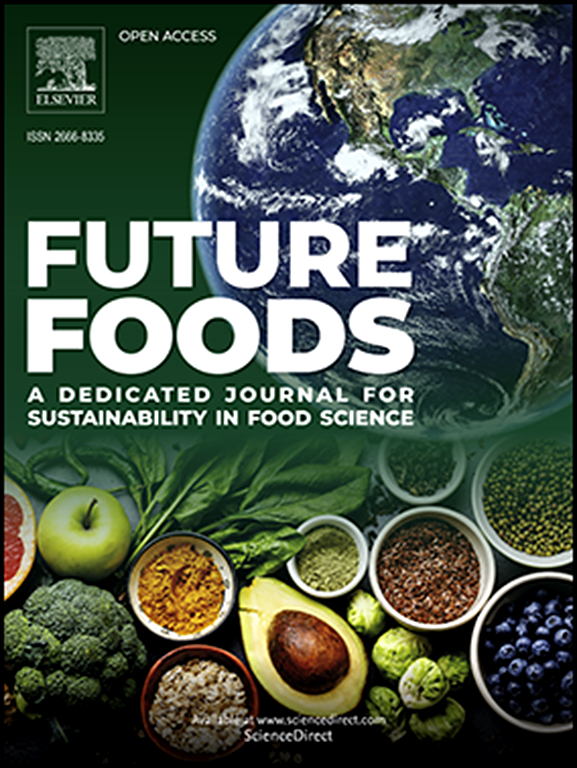Concentrations of fat-soluble vitamins and carotenoids in black soldier fly larvae (Hermetia Illucens) fed with fermented authorized and unauthorized biowaste in Europe
IF 7.2
Q1 FOOD SCIENCE & TECHNOLOGY
引用次数: 0
Abstract
The nutritional and market values of black soldier fly larvae (BSFL) can be improved by enriching them with compounds of interest. It has recently been shown that these larvae can bioaccumulate fat-soluble vitamins and carotenoids under optimal rearing conditions. Based on these preliminary results, the aim was to determine whether BSFL can be significantly enriched in these compounds when raised under conditions usually used by breeders such as preliminary substrate fermentation. BSFL were raised on EU-authorized substrates, i.e. plant biowastes, and EU-unauthorized biowastes from school canteens and supermarkets. Vitamins A, E and D, as well as 10 carotenoids were quantified by HPLC-DAD in the substrates and larvae. Although BSFL mass were lower in the apricot (85 ± 4 mg) group compared to the control group (121 ± 8 mg), the dry weight, total protein and lipid content of all the groups were not different. Most compounds present in the fermented substrates were found in the larvae, but in lower concentrations than those observed under the optimal rearing conditions, e.g. β-carotene in larvae reared on carrots 9.6 ± 0.4 mg/kg FW vs98 ± 17 mg/kg, respectively. Regarding unauthorized substrates, they allowed larvae to bioaccumulate wider variety of micronutrients than other substrates, although in smaller quantities. Thus, raising BSFL under standard industrial breeding conditions makes it possible to obtain larvae enriched in micronutrients, without impacting their total protein and lipid content. However, the rearing conditions must be optimized if higher concentrations of these micronutrients in the larvae are wanted and further studies are necessary to confirm the results of this exploratory study.

求助全文
约1分钟内获得全文
求助全文
来源期刊

Future Foods
Agricultural and Biological Sciences-Food Science
CiteScore
8.60
自引率
0.00%
发文量
97
审稿时长
15 weeks
期刊介绍:
Future Foods is a specialized journal that is dedicated to tackling the challenges posed by climate change and the need for sustainability in the realm of food production. The journal recognizes the imperative to transform current food manufacturing and consumption practices to meet the dietary needs of a burgeoning global population while simultaneously curbing environmental degradation.
The mission of Future Foods is to disseminate research that aligns with the goal of fostering the development of innovative technologies and alternative food sources to establish more sustainable food systems. The journal is committed to publishing high-quality, peer-reviewed articles that contribute to the advancement of sustainable food practices.
Abstracting and indexing:
Scopus
Directory of Open Access Journals (DOAJ)
Emerging Sources Citation Index (ESCI)
SCImago Journal Rank (SJR)
SNIP
 求助内容:
求助内容: 应助结果提醒方式:
应助结果提醒方式:


